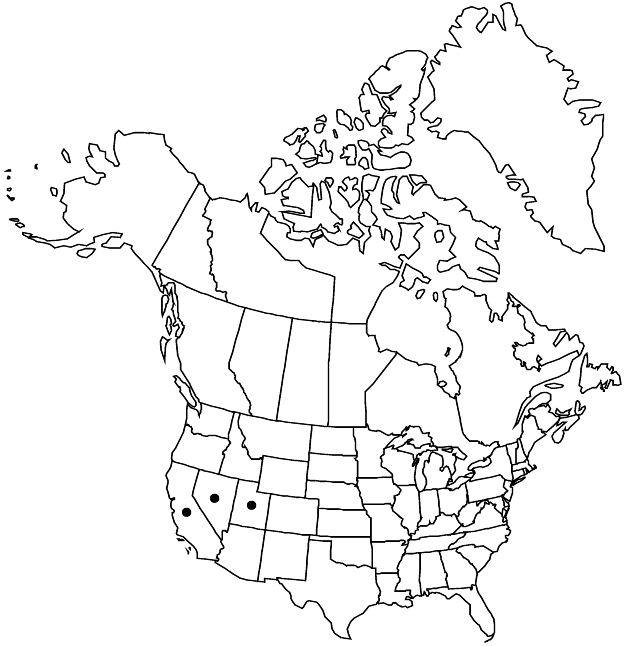Ivesia kingii
Botany (Fortieth Parallel), 91, 448. 1871.
Plants usually grayish green to silvery, often glaucous; glands sparse. Stems usually prostrate-decumbent to ascending, sometimes ± erect, 1–4(–5.5) dm. Basal leaves 5–20 cm; sheathing base glabrous or densely strigose abaxially; stipules absent or linear to lanceolate, 1–4 mm; petiole 0.2–1.2 cm, hairs absent or sparse to dense, appressed or ascending, 0.5–2 mm; leaflets 15–60 per side, loosely to tightly overlapping, (1.8–)2–6(–8) mm, lobes (0–)2–4, narrowly oblanceolate to obovate, hairs absent or sparse to dense, ± appressed, 0.2–0.5(–1) mm. Cauline leaves 4–15. Inflorescences 5–100-flowered, 1–12 cm diam., flowers arranged individually and/or in few to several loose glomerules of 2–10 flowers. Pedicels (1–)2–20(–25) mm. Flowers 8–12 mm diam.; epicalyx bractlets lanceolate to elliptic or ovate, (0.8–)1–2(–2.5) mm; hypanthium shallowly cupulate, 0.5–2 × 1.5–4 mm, ± 1/2 as deep as wide; sepals sometimes purple-suffused, 2–4(–5) mm, narrowly acute to acuminate; petals white, spatulate or obovate to orbiculate, (2.8–)3–5(–6) mm; stamens 20, filaments filiform, 1.5–2.5 mm, anthers white to cream, 0.3–0.6 mm; carpels 2–9, styles 2–2.5(–3) mm. Achenes light brown, 1.8–2.5 mm.
Distribution

w United States.
Discussion
Varieties 2 (2 in the flora).
Significant variation in habit, indument, leaflet lobing, and compactness of inflorescence can be found among and within populations of Ivesia kingii; no taxonomic structure has yet been discerned beyond the varieties recognized here. The variation within widespread var. kingii suggests that var. eremica resulted from a southward, late Pleistocene migration of a hairy phase of I. kingii with compact leaflets out of the Great Basin onto the northern edge of the Mojave Desert (J. L. Reveal 1980). Although densely hairy plants are encountered widely in the Great Basin, only in the Ash Meadows area of southernmost Nye County, the home of var. eremica, is there a consistently hairy phase. The leaflets of var. eremica are so tightly compacted that individual leaflets cannot be distinguished; in var. kingii, leaflets are individually distinct, though plants from Mineral County sometimes approach var. eremica in this regard. In the field, shoots of var. kingii arise directly from a taproot with the spreading branches flowing outwardly from a single point of attachment. In var. eremica, older, mature plants form compact mats with short, spreading caudex branches.
Selected References
None.
Lower Taxa
Key
| 1 | Leaflets individually ± distinguishable, loosely to tightly overlapping; caudices simple or few branched; Great Basin, ec California, Nevada, w Utah. | Ivesia kingii var. kingii |
| 1 | Leaflets mostly not individually distinguishable, tightly overlapping; caudices often much branched; n Mojave Desert, Nevada. | Ivesia kingii var. eremica |